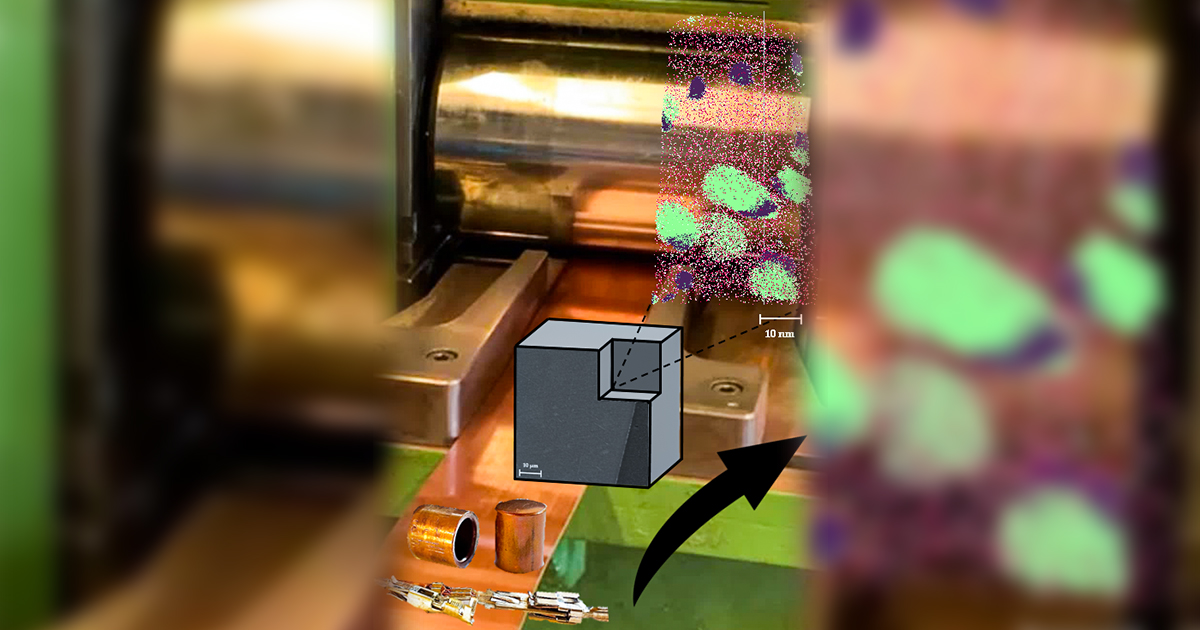Advances in Copper, Copper Alloys and Their Processing
A special issue of Metals (ISSN 2075-4701). This special issue belongs to the section "Metal Casting, Forming and Heat Treatment".
Deadline for manuscript submissions: 30 April 2024 | Viewed by 2347

Special Issue Editors
Interests: ICME—numerical material and process modeling for metallic materials; production processes (forming and heat treatment) for modern steels; development of alloy concepts and process technologies for the nanostructuring of structures as well as for the adjustment of metastable micro-structural phases; combination of experimental laboratory techniques with numerical simulation to model, evaluate and optimize industrial forming and heat treatment processes; forming technology
Special Issues, Collections and Topics in MDPI journals
Interests: copper; copper alloys; CuMg; metal forming; continuous casting; material characterization; metallography; microscopy; mechanical properties; electrical conductivity; microalloyed copper
Interests: production processes; casting; forming; heat treatment; alloy design; copper; aluminum; materials characterization; metallography; microscopy; electrical conductivity; thermo-physical properties
Special Issue Information
Dear Colleagues,
Copper, with its exceptional ability to conduct electricity, adaptability to different shapes, and facile recyclability, is a crucial metal employed across various industries. The functional metal is an essential element for technical and socio-economic progress in emerging trends such as, for example, the transformation of mobility towards electricity. This promotes research to enhance its mechanical properties, such as its strength, wear, creep resistance or corrosion resistance, without disadvantages related to its electrical and thermal conductivity. These trends demand innovative alloy designs, new production concepts and novel application requirements. As such, refining the way we fabricate copper and its alloys, as well as delving deeper into the field to discover its applicative potential, is vital. An in-depth understanding of the relationships between the metal, its processing, the resulting microstructure, and its macroscopic properties is necessary in order to optimize its performance and ensure confidence in advanced applications.
In this Special Issue, we aim to showcase the latest research and most exciting findings regarding copper. We invite scientists, educators, and industry workers to share their studies and findings. We will address a wide array of topics, from basic information about copper and its alloys, to different processing methods (like casting, shaping, heat treatments, 3D printing) and recycling. We will also explore how computer simulations can help to improve the material and its processing techniques.
We trust that this collection of research articles will enhance our understanding of copper materials. It will also set the stage for new applications and sustainable practices. We are excited to see where this research will lead us.
Prof. Dr. Ulrich Prahl
Prof. Dr. Andreas Zilly
Guest Editors
Ms. Julia Dölling
Guest Editor Assistant
Manuscript Submission Information
Manuscripts should be submitted online at www.mdpi.com by registering and logging in to this website. Once you are registered, click here to go to the submission form. Manuscripts can be submitted until the deadline. All submissions that pass pre-check are peer-reviewed. Accepted papers will be published continuously in the journal (as soon as accepted) and will be listed together on the special issue website. Research articles, review articles as well as short communications are invited. For planned papers, a title and short abstract (about 100 words) can be sent to the Editorial Office for announcement on this website.
Submitted manuscripts should not have been published previously, nor be under consideration for publication elsewhere (except conference proceedings papers). All manuscripts are thoroughly refereed through a single-blind peer-review process. A guide for authors and other relevant information for submission of manuscripts is available on the Instructions for Authors page. Metals is an international peer-reviewed open access monthly journal published by MDPI.
Please visit the Instructions for Authors page before submitting a manuscript. The Article Processing Charge (APC) for publication in this open access journal is 2600 CHF (Swiss Francs). Submitted papers should be well formatted and use good English. Authors may use MDPI's English editing service prior to publication or during author revisions.
Keywords
- copper
- copper alloys
- casting
- forming
- additive manufacturing
- joining
- microstructure
- characterization
- recycling
- simulation







